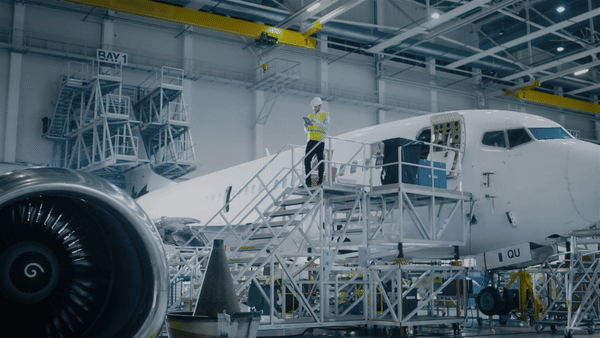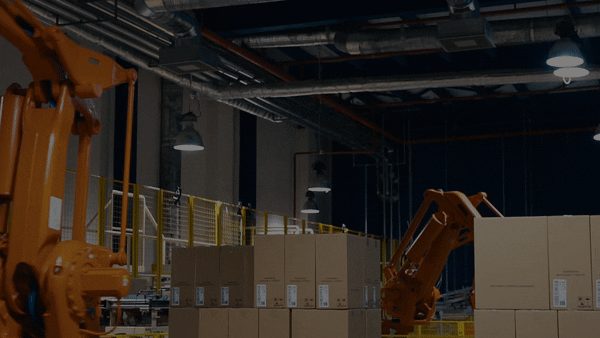

The current global crisis is causing a level of disruption never experienced before, from our daily lives to our supply chains. Industrial companies must now focus on building business continuity, shortening recovery times, and developing new, more agile business models. But crisis moments also present opportunities; by adopting automation and digital technologies, industrial companies can quickly adapt to — and thrive in — these new business realities.
As a leader in digital product engineering, GlobalLogic can help you accelerate your Industry 4.0 journey, from automating manufacturing processes to developing new IoT solutions.
Asset / fleet tracking, supply chain smart contracts, identity management
3D modeling, product / process simulation, real-time QA / testing, remote diagnostics
Predictive maintenance, warehouse automation, field service management solutions
Lorem ipsum, dolor sit amet consectetur adipisicing elit. Ipsam vel
We now offer a free 45-min remote session to review your digital readiness and recommend best practices.
Headquartered in Silicon Valley, GlobalLogic operates design studios and engineering centers around the world, extending our deep expertise in areas like Experience Strategy & Design, Big Data and Analytics, DevOps, AI/ML, etc. Below are examples of how we partner with industrial companies to design and build the innovative products, platforms, and digital experiences that will accelerate their transition into tomorrow’s digital business.
We designed a digital twin solution that enables our warehouse automation client to dynamically test its products prior to deployment, ensuring quality releases while minimizing maintenance downtime.
We built an IoT platform that helps a major construction tool manufacturer better manage its equipment across the warehouse / office / field and also deliver a Tools-as-a-Service offering to its customers.
Digital twin technology is one of the fastest growing concepts of Industry 4.0. In the simplest terms, a digital twin is a virtual replica of a real-world object that is run in a simulation environment to test its performance and efficacy.
According to Gartner, 13% of organizations implementing IoT projects already use digital twins, while 62% are either in the process of establishing digital twin use or plan to do so. The digital twin market is estimated to grow from $3.8 billion in 2019 to $35.8 billion by 2025, at a CAGR of 37.8%, according to the latest report from MarketsandMarkets.

Growth in IoT and cloud—and the goal to cut down costs and reduce time for product development—are the key factors driving growth in the digital twin market. IoT now enables engineers to test and communicate with sensors that are integrated within a company’s operating products, delivering real-time insights about the system’s functionality and ensuring timely maintenance.
While digital twin technology is already applied in various industries, it’s crucial for product manufacturers. Let’s take a look at the benefits of using a digital twin model, what you should consider before adopting one, and a real-world example of how GlobalLogic deployed digital twins for a leading warehouse automation company.
With the help of a digital twin, companies can test and validate a product before it even exists in the real world. By creating a replica of the planned production process, a digital twin enables engineers to identify any process failures before the product goes into production. Engineers can disrupt the system to synthesize unexpected scenarios, examine the system’s reaction, and identify corresponding mitigation strategies. This new capability improves risk assessment, accelerates the development of new products, and enhances the production line’s reliability.
Since a digital twin system’s IoT sensors generate big data in real-time, businesses can analyze their data to proactively identify any problems within the system. This ability enables businesses to more accurately schedule predictive maintenance, thus improving production line efficiency and lowering maintenance costs.
It is often very difficult or even impossible to get a real-time, in-depth view of a large physical system. However, a digital twin can be accessed anywhere, enabling users to monitor and control the system performance remotely.
Process automation and 24×7 access to system information allows technicians to focus more on inter-team collaboration, which leads to improved productivity and operational efficiency.
A virtual representation of a physical object has the ability to integrate financial data, such as the cost of materials and labor. The availability of a large amount of real-time data and advanced analytics enables businesses to make better and faster decisions about whether or not adjustments to a manufacturing value chain are financially sound.

According to Gartner’s estimation, 75% of the digital twins for IoT-connected OEM products will utilize at least five different kinds of integration endpoints by 2023. The amount of data collected from these numerous endpoints is huge, and each of the endpoints represents a potential area of security vulnerability. Therefore, companies should assess and update their security protocols before adopting digital twin technology. The areas of highest security importance include:
Digital twin models depend on the data from thousands of remote sensors that communicate over unreliable networks. Companies that want to implement digital twin technology must be able to exclude bad data and manage gaps in the data streams.
Users of digital twin technology must adopt new ways of working, which can potentially lead to problems in building new technical capabilities. Companies need to make sure that their staff has the required skills and tools to work with digital twin models.

Our client, a leading warehouse automation company, was experiencing challenges in testing new releases of different modules and microservices. The company had to stop its production warehouse operations for several hours to test new software releases, which led to losses in productivity. The client also found it difficult to model and test new warehouse structures to find the most effective and productive setups.
GlobalLogic developed a new testing platform that used production deployment scripts, which enabled the client to test any combination of modules and microservices on a dynamic environment. We also designed a warehouse modeling solution that allowed the client to visually create a warehouse structure with all the required technical specifications. Finally, we created a documentation solution to review the client’s software stack landscape. To deliver the digital twin model, we implemented the following technologies:
These different components work together to emulate the whole warehouse operation, which in turn is used to evaluate performance levels and make informed decisions about how to implement real production warehouses.
GlobalLogic’s digital twin solution enabled the client to iteratively test thousands of warehouse structure options automatically in order to find the most effective production model. In addition to now being able to implement a system efficiency check before actual installation, the client realized the following benefits:

Digital twin technology — combined with the latest machine learning and artificial intelligence tools — is helping companies across many industries reduce operational costs, increase productivity, improve performance, and change the way predictive maintenance is done. For product manufacturers in particular, digital twin technology is crucial to achieving more efficient production lines and faster time-to-market.
Digital twin technology — combined with the latest machine learning and artificial intelligence tools — is helping companies across many industries reduce operational costs, increase productivity, improve performance, and change the way predictive maintenance is done. For product manufacturers in particular, digital twin technology is crucial to achieving more efficient production lines and faster time-to-market.





